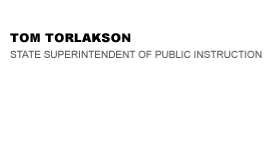2014–15 COE Funding Letter


Official Letter
Official Letter
Note: This letter reflects the original guidance issued based on the information available at that time. For additional details and updated information, please reference the Frequently Asked Questions available at http://www.cde.ca.gov/fg/aa/pa/sdfundcoeservfaq.asp. This note was not on the original published letter; it was added on December 8, 2014.
Dear District Superintendents and Chief Business Officials:
FUNDING CREDITED TO SCHOOL DISTRICTS FOR STUDENTS
SERVED BY A COUNTY OFFICE OF EDUCATION
As local educational agencies (LEAs) work hard to implement the many significant changes resulting from the Local Control Funding Formula (LCFF), I want to draw attention to one change related to certain students who are served by county offices of education (COE) but for whom the LCFF funding is credited and apportioned to the school district of residence. Please note that this letter does not apply to charter schools that run county programs, for which the funding mechanism is different.
As shown in the attachment (http://www.cde.ca.gov/fg/aa/pa/coesdfundingltratt.asp) to this letter, under the LCFF, COEs receive an Alternative Education Grant for any student that attends a juvenile court school operated by the COE and for students that attend other schools operated by the COE, such as county community schools or special education classes and centers, who are enrolled pursuant to any of the following:
- Probation-referred pursuant to Sections 300, 601, 602, and 654 of the Welfare and Institutions Code.
- On probation or parole and not in attendance in a school.
- Expelled for any of the reasons specified in subdivisions (a) or (c) of Education Code Section 48915.
Students who attend other schools operated by the COE and who do not meet requirements 1–3 above are credited to the district of residence, for purposes of LCFF funding. This arrangement is similar to the funding for many of these students under the former revenue limit system, whereby COEs reported the average daily attendance (ADA) by district of residence to the California Department of Education (CDE), and CDE credited the district of residence with the ADA. Under that system, because the law required districts to pay the entire revenue limit for such students to the county office of education, CDE managed the transfer of funds at the state level. This transfer was referred to as the county office funds transfer and was a component of the Principal Apportionment Summary exhibit.
Under the LCFF, COEs will continue to report to CDE, through the apportionment software, ADA for the students they serve that are district-funded, by district of residence. Additionally, until functionality is built into the California Longitudinal Pupil Achievement Data System (CALPADS), COEs will also report aggregate information on enrollment and unduplicated pupil counts for these students by district of residence. The CDE will credit the ADA, enrollment, and unduplicated pupil counts to the district of residence before calculating the district’s LCFF funding.
However, the CDE will no longer transfer funds back to the COE and will instead apportion funds to the district of residence. COEs and districts must make local arrangements related to funding for these students. This change will be implemented with the certification of the 2013–14 Second Principal Apportionment (P-2). Because the CDE will continue to include the county office funds transfer in the 2013–14 First Principal Apportionment, the P-2 payment will reflect a substantial settle-up that will result in an increase to school district apportionments and a decrease to COE apportionments. Other funding generated by these pupils, such as lottery apportionments, are unchanged and will be credited to the COE.
The CDE will continue to have discussions with school districts and COEs to look for a mutually agreeable solution that may reduce the administrative burden caused by the elimination of the state-level transfer. Additionally the CDE continues to explore the "substance" of the transfer agreements between districts and the COEs (whether the agreements are contracts for services, pass-throughs, or inter-agency transfers), which will affect the Standardized Account Code Structure (SACS) coding for these transfers. Additional guidance on the SACS coding is forthcoming.
For additional information on this topic, please visit CDE’s Web page at http://www.cde.ca.gov/fg/aa/pa/sdfundcoeservfaq.asp. Other LCFF information is available at http://www.cde.ca.gov/fg/aa/lc/.
If you have additional questions regarding this topic, you may address them to Elizabeth Dearstyne, Administrator, Office of Principal Apportionment and Special Education, by phone at 916-324-4541 or by e-mail at edearstyne@cde.ca.gov.
Sincerely,
Peter Foggiato, Division Director
School Fiscal Services Division
Attachment [http://www.cde.ca.gov/fg/aa/pa/coesdfundingltratt.asp]
